Three Natives to Add Sparkle to Your Winter Garden
December 28, 2019
Aren’t we the luckiest living in the mild, green Pacific Northwest? With four distinct seasons, but none so extreme that we have to hide indoors, our gardens can (and should) engage us year round. I hear you that winter looks the bleakest. Let’s keep the interest (no cabin fever, friends!) with the addition of some no-fuss native beauties.
Typical advice for winter garden interest leans heavily on evergreens. It’s true that seeing green under a gray sky can be heartening. But, restricting your winter palette to evergreens can feel heavy and a little too Christmas-y. Let’s lighten things up with some other options. I’m going to highlight three of my faves here that work in every yard and only one is evergreen.
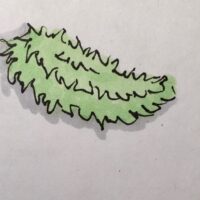
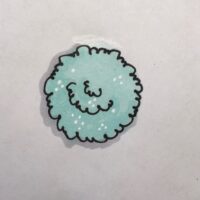
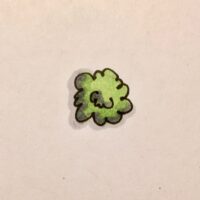
The first selection to alleviate the winter blahs is a refreshing sparkler of spring-like green. Have you ever noticed fresh ferny growth lighting up mossy big leaf maple branches or the forest floor on your fall hikes? You wonder, “Does that plant have the seasons confused? What’s it thinking looking so new when everything else is in decline?” Well, if you’re a licorice fern (Polypodium glycyrrhiza) that’s the way you roll. Come the first steady rains of fall, licorice ferns unfurl vernal green fronds that contrast handsomely with the golds and browns of forests and shaded gardens. The light and bright greenery lasts through winter and into spring until summer’s drought sends licorice fern into dormancy. In this way, it grows the opposite of many of the plants you’re more familiar with. Though it’s green in the winter, it isn’t technically an evergreen. It’s summer deciduous!
In your garden, you can plant licorice fern in a shaded spot with humus-y soil. It’s great combined with plants that grow large in summer to cover it’s time of dormancy (like hellebores, Japanese forest grass, or Solomon’s seal). It also combines beautifully with the patterned leaves of cyclamen which have the same summer deciduous growth habit. Locally, on Skinner’s Butte, I admire it’s undulating layers carpeting the base of winter deciduous osoberry (Oemleria cerasiformis). Follow nature’s pattern and plant licorice fern under your leafless blueberries, azaleas, roses or others to add verdure to the winter scene.
I can’t leave off this introduction to licorice fern without encouraging you to nibble the fleshy rhizomes that give the plant it’s name. Exploring the forest with kids (or playful adults) is the perfect time to sample the woodsy sweetness of licorice fern. If you come across an abundant patch, push aside the leafy duff to reveal the finger-like growths beneath. Break off a bit and give it a taste. Who knows, in time, your garden patch of licorice fern could spread enough to provide you with a winter pot of licorice flavored tea!
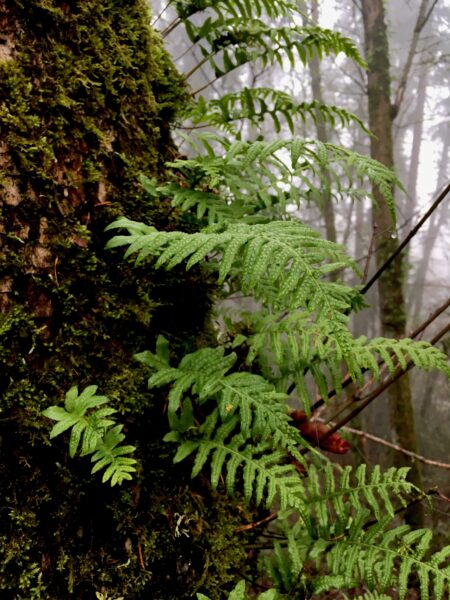
licorice fern (Polypodium glycyrrhiza)
Next, let’s visit the winter magic of snowberries (Symphoricarpos albus). Lit by a stream of sun cutting low between the trees, a sparkle of white berries, hovering in space on their lighter-than-air branches – snowberries are positively breathtaking to see in the forest or in your backyard. As a garden plant, snowberries are too often overlooked. They’re as common as sword fern on local forest hikes, and I think it’s this pervasiveness that blinds us from its beauty and worthiness in our our home gardens. Take a second look at snowberry.
Without fail, there’s an area in your yard that is characterized by dry shade. Everyone’s got dry shade. It could be the densely root-y shade of a mature tree or, the cold, compacted shade on the north side of your house. When I meet dry shade in a landscape I’m designing, a limited list of plants comes to mind. It’s a tough place to thrive! Snowberry is at the top of this list of dry shade rock stars.
Spectacular in winter, snowberry continues to earn it’s garden-worthiness into spring with the sweetest, little, hummingbird-attracting blooms. Sometimes the flowers continue into summer, especially with irrigation.
I love this plants blue-green delicate leaves spring into summer but, late summer drought can bring a dusting of powdery mildew. Just know it’s normal, harmless, and potentially interesting. Soon enough the leaves yellow and drop and then you get to be dazzled by the bobbling berries all over again.
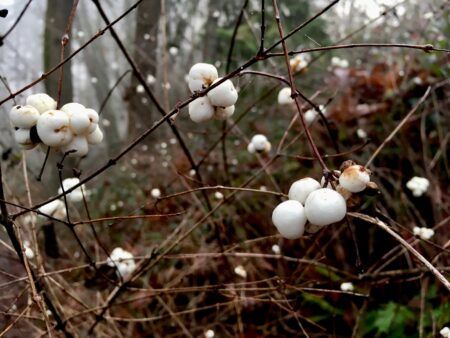
snowberry (Symphoricarpos albus)
The third plant for winter is really one of the best, easy-to-grow, native plants for your garden. Introducing Tellima grandiflora or fringecup. (I use the name tellima even as a common name. It’s pretty!) Like the licorice fern and snowberry, you’ll see tellima on your Ridgeline hikes or wherever you ramble in the Pacific Northwest.
Notice how great it looks in winter – robust, fresh, green and sometimes purpling rosettes of leaves. Here’s your evergreen! No, it’s not a conifer. It’s not even woody. It’s an evergreen ground-covering native. Adding tellima to your flowering plantings will help suppress weeds. It’s overlapping leaves keep the ground covered and weed-free through the rainy season when so many weeds sprout on bare ground.
Tellima’s really lovely in flower, too. That’s why the dutch plantsmen know our Pacific Northwest native so well – it’s uniquely beautiful. I like to combine it with red-flowered coral bells (like Heuchera ‘Tokyo’) to highlight the rosy blush on the intricate fringecup petals. It’s good in shade and into the sun, especially where taller growing plants might shade it in the summer. If you let it self-seed in your garden, it’ll find all the right nooks.
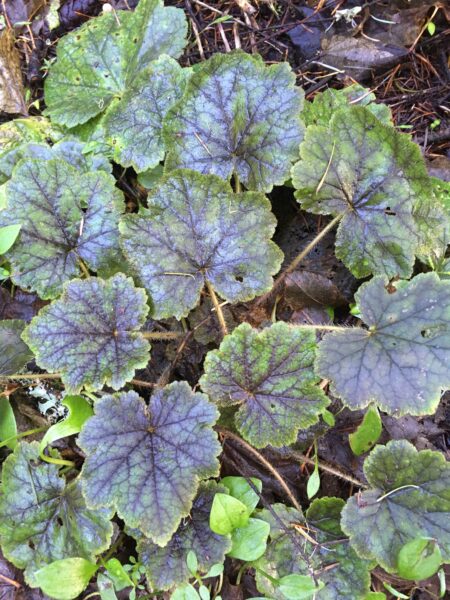
fringecup (Tellima grandiflora)
Happy winter gardening. Keep going outside. No matter the season, it’s always true that the best thing you can put on your garden is your shadow.
Much love,
Leslie
